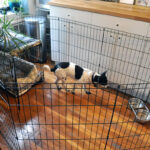How Much Is A Dog C Section
The Cost of a Dog C Section: Factors, Risks, and Tips
If you are a dog owner facing the prospect of a c section for your pregnant or birthing dog, you may wonder how much it will cost and what it involves. While the exact price of a dog c section varies depending on various factors, such as the location, the veterinarian, the breed, the health condition, and the urgency, it typically ranges from $500 to $3000 or more. However, the cost is not the only consideration when deciding whether a c section is necessary or beneficial for your dog’s and puppies’ well-being.
In this article, we will explore in detail the cost of a dog c section, including its components and variables. We will also discuss some risks and complications associated with c sections and some tips on how to prepare for and recover from this procedure. By reading this article, you can gain a better understanding of what to expect and how to make informed decisions about your dog’s reproductive health.
What Is a Dog C Section?
A dog c section refers to a surgical procedure that involves removing the puppies from the uterus of a female dog through an incision made in the abdomen. C section stands for “cesarean section,” which comes from the Latin word “caesus” (cut) and refers to any surgical operation that involves cutting into an organ or tissue. In dogs, c sections are usually performed when natural delivery is not possible or safe due to various reasons, such as:
– The size or shape of the puppies relative to the mother’s pelvis
– The position or presentation of the puppies (e.g., breech)
– The presence of uterine abnormalities (e.g., torsion)
– The history of failed labor or dystocia (difficult birth)
– The maternal health status (e.g., eclampsia)
C sections can be elective or emergency procedures, depending on the circumstances and the timing. Elective c sections are planned in advance and scheduled for a specific date and time, usually around the 58th day of gestation (counting from the first day of mating). Emergency c sections, on the other hand, are performed when there is an urgent need to deliver the puppies as soon as possible, such as when the mother shows signs of distress or the puppies are at risk of dying.
How Much Does a Dog C Section Cost?
As mentioned earlier, the cost of a dog c section varies widely depending on several factors. Here are some components that can affect the final price:
– The location: The cost of living and practicing veterinary medicine varies across different regions and cities. Generally speaking, urban areas tend to have higher prices than rural areas.
– The veterinarian: The experience, expertise, and reputation of the veterinarian also play a role in determining the cost. A board-certified veterinary surgeon may charge more than a general practitioner or a new graduate.
– The breed: Some breeds are more prone to dystocia or require special care during pregnancy and delivery due to their size, shape, or genetics. These breeds may incur higher c section fees than others. Examples include bulldogs, Boston terriers, pugs, chihuahuas, dachshunds, and boxers.
– The health condition: If your dog has pre-existing health issues that require extra monitoring or treatment before or after the c section, you may need to pay additional fees for lab tests, medications, or hospitalization.
– The urgency: Emergency c sections typically cost more than elective ones because they require immediate attention and resources. Moreover, if your dog needs to be stabilized or resuscitated before or after the surgery, you may incur extra charges for anesthesia, oxygen therapy, blood transfusion, or critical care.
According to various sources and surveys conducted by pet insurance companies and veterinary associations, the average cost of a dog c section in the US ranges from $500 to $3000 or more. However, some cases may exceed this range due to unforeseen complications or additional services. For example, if your dog needs a spay surgery (removal of ovaries and uterus) after the c section to prevent future pregnancies, you may need to pay another $200 to $800.
To get a more accurate estimate of the cost of a dog c section for your specific situation, you should consult with your veterinarian and ask for a detailed breakdown of the fees involved. Some veterinarians may offer payment plans or discounts for repeat clients or referrals, so it’s worth asking about these options as well.
What Are the Risks and Complications of a Dog C Section?
Like any surgical procedure, a dog c section carries some risks and potential complications that you should be aware of before making a decision. Here are some examples:
– Anesthesia: Dogs undergoing c sections need to be placed under general anesthesia, which can pose some risks depending on their age, breed, health status, and allergies. Some dogs may experience adverse reactions such as vomiting, hypotension (low blood pressure), arrhythmia (irregular heartbeat), or respiratory arrest (breathing cessation).
– Bleeding: During the c section, the veterinarian needs to cut through several layers of tissue and blood vessels to reach the uterus. Sometimes, excessive bleeding can occur if a vessel is not properly cauterized or ligated. This can lead to anemia (low red blood cell count), shock, or death.
– Infection: Any surgical incision can introduce bacteria into the body and cause an infection if proper hygiene and care are not maintained. Your dog may need to receive antibiotics before or after the c section to prevent or treat an infection.
– Uterine tear: In rare cases, the uterine wall may tear or rupture during the c section, especially if the uterus is weak or damaged. This can result in severe bleeding and require additional surgery or even a hysterectomy (removal of the uterus).
– Damaged puppies: During the c section, the puppies may get injured by the surgical instruments or by pressure from the incision. Some puppies may also be born premature or stillborn due to complications related to their health or growth.
– Milk letdown failure: After the c section, your dog may have difficulty producing milk for her puppies due to hormonal imbalances or stress. This can lead to malnourishment and dehydration of the puppies, which may require supplemental feeding or hand-raising.
While these risks may sound daunting, it’s important to remember that most dogs recover well from c sections and give birth to healthy and happy puppies. The key is to choose a qualified and experienced veterinarian who can minimize these risks and provide adequate follow-up care.
How Can You Prepare for and Recover from a Dog C Section?
If you decide to proceed with a dog c section, there are some steps you can take to prepare yourself and your dog for the procedure:
– Consult with your veterinarian: Ask your veterinarian about the pros and cons of a c section for your dog’s specific case, including any alternative options such as induction of labor or natural delivery. Make sure you understand all the fees involved and clarify any questions or concerns you may have.
– Monitor your dog’s health: Before the c section, monitor your dog’s temperature, appetite, behavior, and nesting habits. Make sure she has access to clean water and a comfortable place to rest. If you notice any signs of distress such as vomiting, diarrhea, lethargy, or lack of fetal movement, contact your veterinarian immediately.
– Prepare a whelping kit: A whelping kit is a collection of items that you will need during and after the c section to care for your dog and her puppies. Some essential items include clean towels, scissors, sterile gloves, umbilical cord clamps or ties, a heating pad or lamp, a scale, and puppy milk replacer. Make sure you have these items ready and easily accessible before the c section.
– Follow the postoperative instructions: After the c section, your dog will need some time to recover from the surgery and bond with her puppies. Your veterinarian may prescribe pain medications, antibiotics, or anti-inflammatory drugs to help her heal and prevent infections. You should also monitor her incision site for signs of swelling, discharge, or redness. Avoid letting her lick or chew on the incision by using an Elizabethan collar or a surgical suit. Offer her small but frequent meals to avoid gastrointestinal upset. Provide a warm and quiet place for her and her puppies to rest. If you notice any abnormal symptoms or behaviors such as fever, lethargy, loss of appetite, or rejection of puppies, contact your veterinarian right away.
By following these tips and guidelines, you can ensure that your dog receives the best possible care during and after a c section. Remember that every dog is unique and may require different levels of attention and support. As a responsible pet owner, it’s up to you to provide your dog with the love and care she deserves throughout her reproductive journey.
Conclusion
A dog c section can be a life-saving procedure for both the mother dog and her puppies. However, it also involves some risks and costs that should not be taken lightly. By understanding the factors that affect the cost of a dog c section, as well as the risks and complications associated with this procedure, you can make informed decisions about your dog’s reproductive health. Remember to consult with your veterinarian about any concerns or questions you may have regarding c sections or other aspects of your dog’s pregnancy and delivery. With proper care and attention, your dog can give birth to healthy and happy puppies and enjoy a fulfilling life as a beloved companion.



